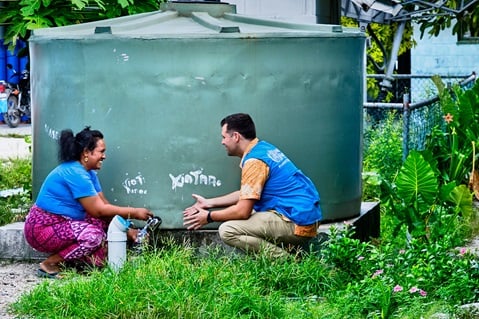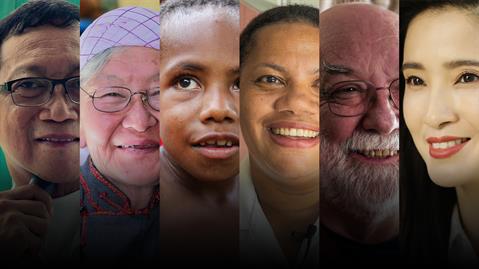Woman counselling: Eliminating mother to child transmission of HIV, hepatitis & syphilis
Eliminating mother to child transmission of HIV, hepatitis and syphilis
HIV, hepatitis B and syphilis can be transmitted from infected mothers to their infants, causing significant morbidity and mortality. In 2024, 45 000 children were living with HIV in the Region, with a transmission rate of 26% – four times the elimination target. While congenital syphilis cases have decreased from 42 000 in 2019 to 26 300 in 2022, the rate remains at 149 per 100 000 live births – three times higher than the target.
Additionally, while hepatitis B prevalence among children under 5 has dropped by 92% since 2000, at 0.68%, it remains above the 0.1% target.
WHO Western Pacific Regional Office supports Member States to achieve elimination of mother-to-child transmission (EMTCT) of HIV, hepatitis B and syphilis through a coordinated approach proposed in the Regional Framework for Triple Elimination of Mother-to-Child Transmission of HIV, Hepatitis B and Syphilis in Asia and the Pacific, 2018-2030.
WHO WPRO in collaboration with WHO SEARO, UNICEF and UNAIDS reviewed the Asia Pacific countries progress in achieving the EMTCT, and developed Roadmap for Triple elimination of mother-to child-transmission of HIV, syphilis, and hepatitis B in Asia Pacific | UNICEF East Asia and Pacific.
To further strengthen support for countries, the Regional Validation Advisory Group on Elimination of Mother-to-Child Transmission (EMTCT) of HIV, Hepatitis B, and Syphilis, and Accelerated Control of Viral Hepatitis in the Western Pacific Region (WP RVAG) in 2024 to streamline the EMTCT validation process, enhance coordination, and maximize technical capacity. The RVAG provides expert guidance to help countries overcome challenges, improve data systems, and achieve their EMTCT targets.











